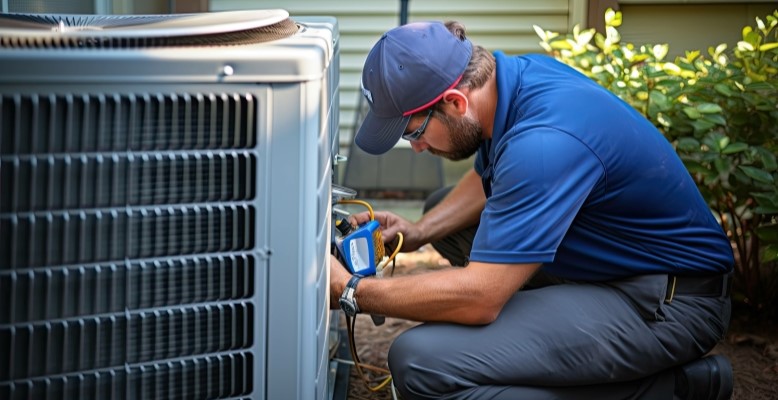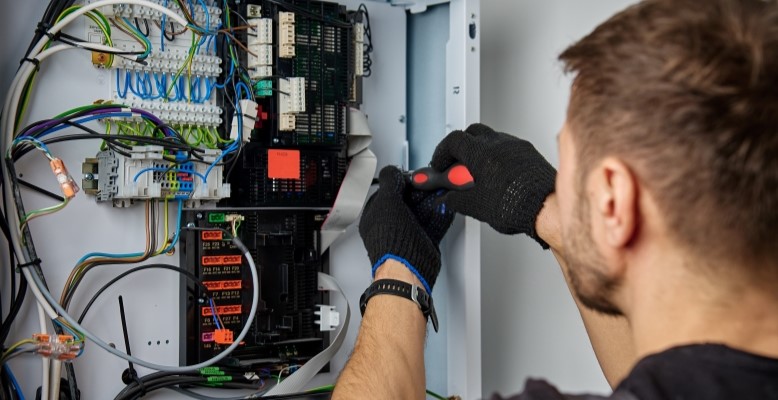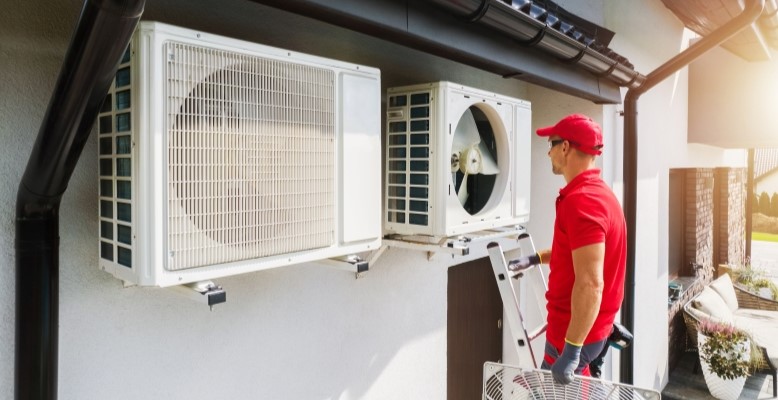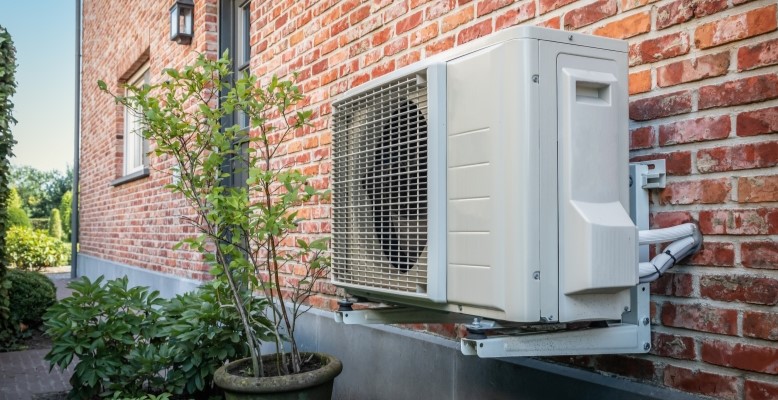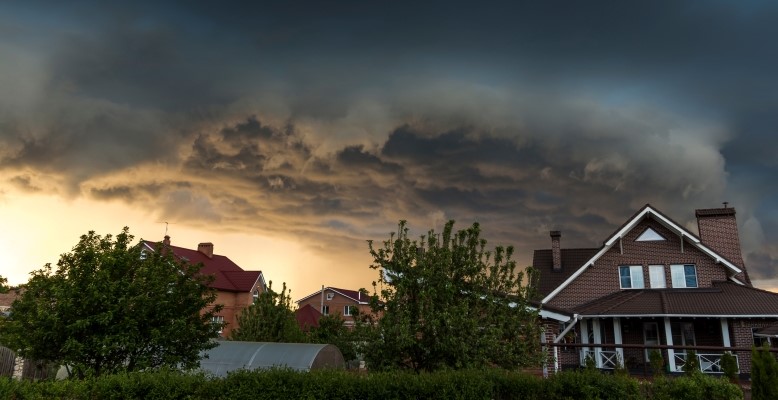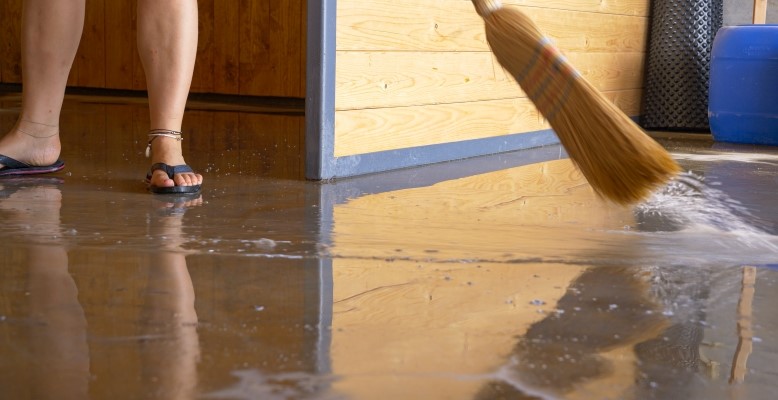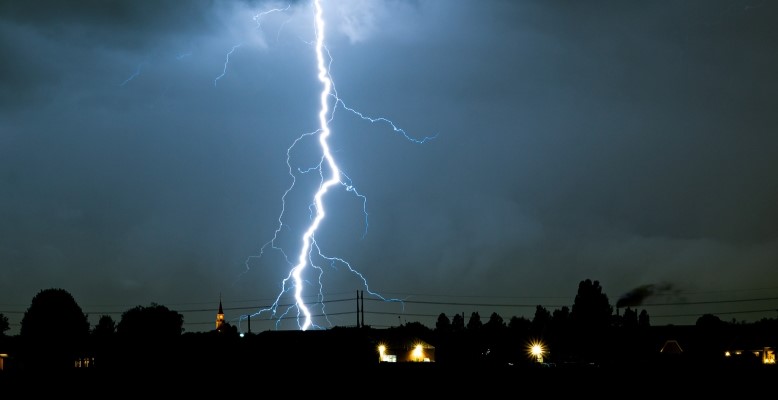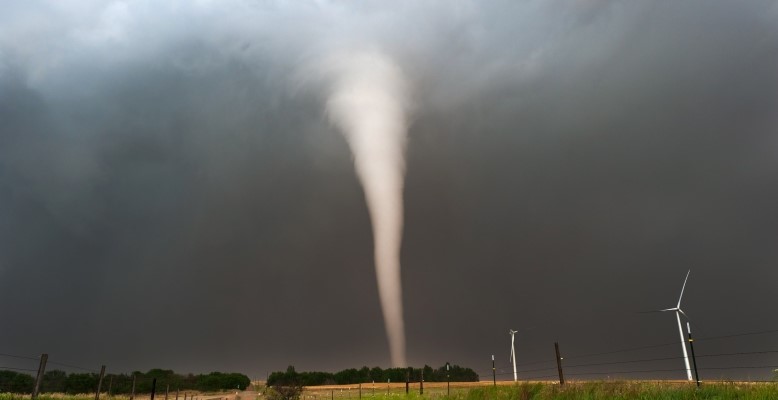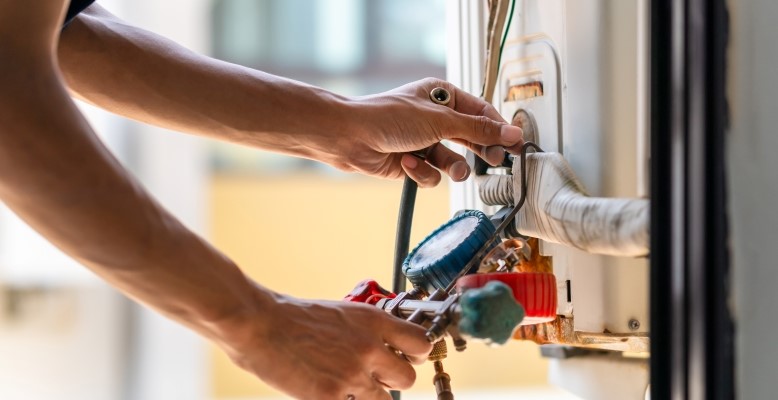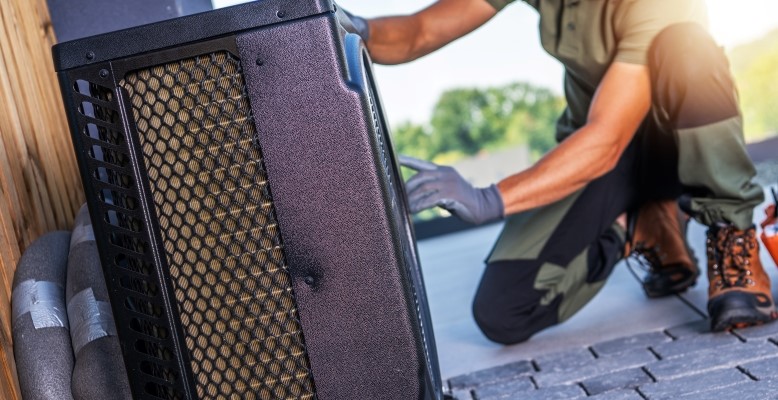Published on July 16, 2025 by: alhhvac
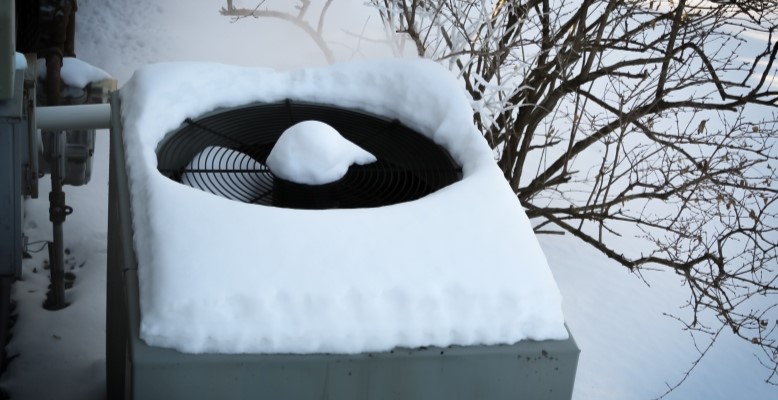
Manage Snow & Ice on Your HVAC Units With These Expert Tips
Winter storms bring frigid temperatures, heavy snowfall, and icy conditions — all of which can spur significant issues for your property. Recent .
One particularly vulnerable part of your home is your HVAC system. Snow accumulation can block airflow, while ice buildup on coils and fans can damage components. Additionally, excessive moisture from melting snow can seep into electrical connections, leading to short circuits or further mechanical damage.
Taking proactive steps to protect your HVAC unit can prevent costly repairs, extend its lifespan, and keep your home warm throughout the harshest winter conditions. Learn how you can protect your unit in this comprehensive guide — alongside key tips for removing snow and ice from your system.
Preparing Your HVAC Unit for Snowstorms
Winter weather can take a toll on your heating system, but you can take steps to minimize damage before the snow and ice arrive. Here are some of the most effective.
Secure Outside Units
Strong winter winds and heavy snowfall can displace or damage outdoor HVAC units. Securing your unit to a stable foundation, such as a concrete pad, helps prevent movement and ensures optimal performance. Additionally, clearing loose debris or objects around the unit before a storm can prevent them from becoming projectiles that could cause damage.
Shut off HVAC Systems
If a severe snowstorm is forecasted, shutting off your HVAC system can prevent damage from frozen coils or restricted airflow. Turning off the system during extreme cold periods can also prevent it from overworking in dangerous conditions. Consider using a programmable thermostat to avoid excessive strain on the system.
Install Snow Covers
Protective covers specifically designed for HVAC units help keep snow and ice from accumulating on sensitive components. Choose a breathable cover that allows ventilation while providing a barrier against moisture buildup. Covers can also reduce the risk of small animals nesting inside units during colder months.
Purchase De-Icing Products
Having de-icing products on hand can help prevent excessive ice buildup on your HVAC unit. Pet-safe de-icers and gentle melting agents can be used to clear ice from outdoor components without damaging the system. Avoid using rock salt or corrosive chemicals that could degrade metal and electrical parts.
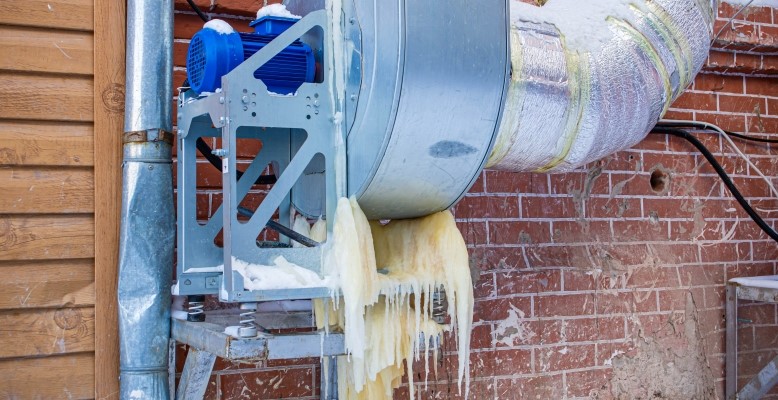
What Causes HVAC Units to Ice Up?
Winter storms aren’t the only causes of HVAC units icing up; your system can also freeze due to a combination of cold temperatures, excessive moisture, and restricted airflow. Some of the most common causes include:
- Blocked airflow from accumulated snow, ice, or debris.
- Malfunctioning defrost cycles, preventing the system from melting ice buildup.
- Low refrigerant levels, causing evaporator coils to freeze.
- Prolonged exposure to freezing temperatures, leading to ice formation on key components.
- Lack of regular maintenance, increasing the risk of build and inefficiencies.
Proper maintenance and preventative measures can help reduce the likelihood of ice-related HVAC problems during the winter months — including during severe winter storms.
How to Remove Ice from HVAC Systems
If your HVAC system becomes covered in ice, you can take a few steps to safely remove it. To defrost, try to:
- Turn off the system to prevent further damage.
- Allow natural thawing by giving the ice time to melt.
- Use warm water to gently melt ice from coils and fans.
- Avoid sharp objects that can puncture refrigerant lines or damage delicate components.
- Check for airflow blockages once the ice is cleared to ensure proper operation.
- Use a hairdryer or space heater at a safe distance to speed up the thawing process if needed.
Sometimes, none of these methods will be enough. Other times, ice will have already caused damage to your HVAC system. In these instances, and many more, consider calling an HVAC repairman to check for potential long-term issues.
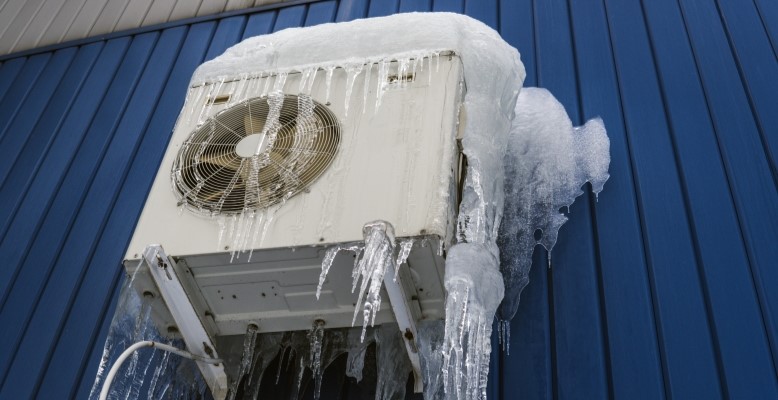
How to Remove Snow from HVAC Systems
Cleaning accumulated snow from your HVAC unit is essential for maintaining unit airflow and efficiency after a storm. To safely remove snow from your system, go ahead and:
- Gently brush off loose snow using a soft broom or brush.
- Shovel around the unit to prevent snow from blocking airflow.
- Avoid using salt or harsh chemicals, as they can corrode metal components.
- Ensure vents remain clear to prevent carbon monoxide buildup in gas heating systems.
- Check the surrounding area for icicles or overhanging snow that could fall and damage the unit.
Regular snow removal can prevent your system from overworking and help maintain a consistent heating output throughout the winter season. Scheduling periodic maintenance checks before and after winter storms can also ensure optimal performance.
Andy Lewis / Hobson Helps Repair & Maintain HVAC Systems After Winter Weather Events
Even with careful preparation, winter storms and conditions can still cause unexpected HVAC issues. If your system has been impacted by snow, ice, or freezing temperatures, Andy Lewis / Hobson can help. Our expert technicians provide through inspections, repairs, and maintenance services to ensure safe and efficient operation of your HVAC system.
Whether you need emergency repairs, defrosting assistance, or preventative winter maintenance, our team is ready to restore your system’s performance. We also offer guidance on upgrading insulation, improving airflow, and using energy-efficient solutions to reduce heating strain during extreme winter conditions. Contact Andy Lewis / Hobson today to keep your heating and cooling system in top condition, no matter the weather.

